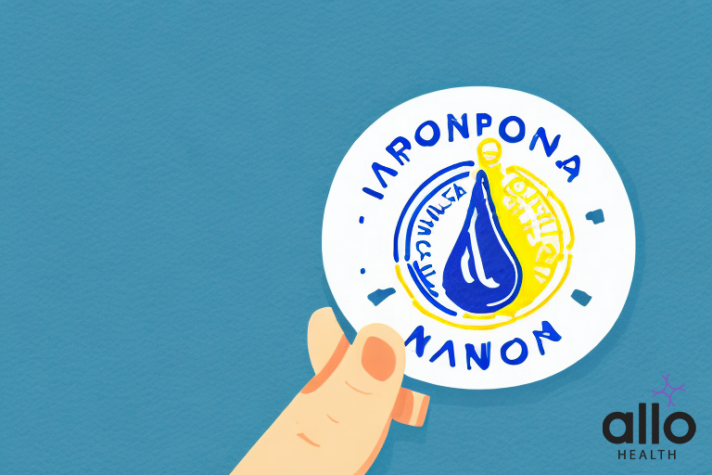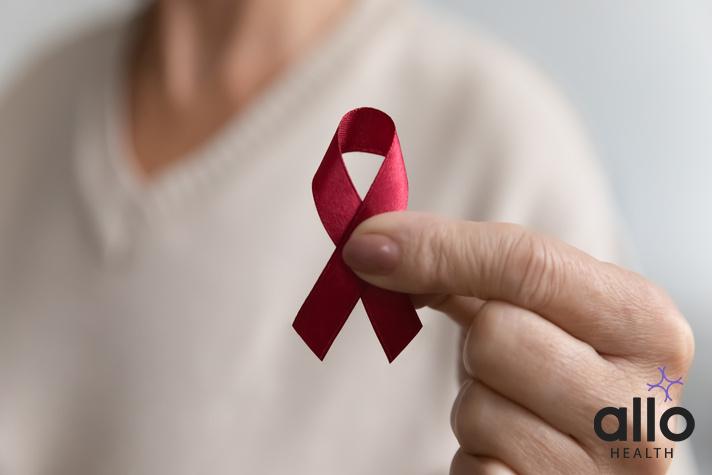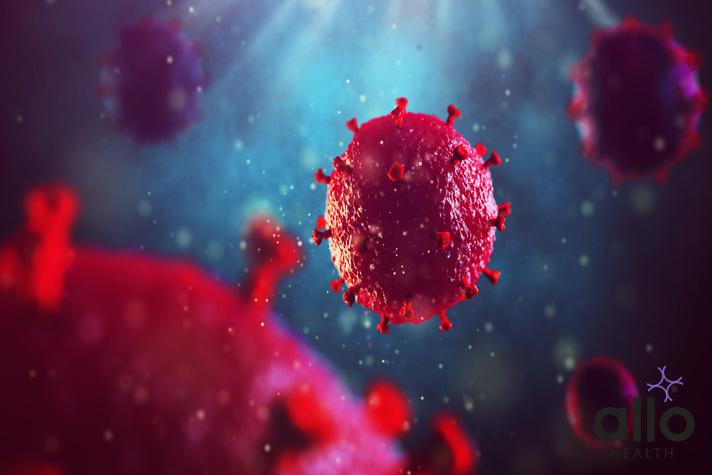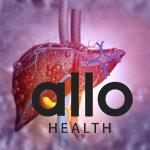‘I Used A Condom And Still Got HIV’ – Does Using a Condom Guarantee Protection From HIV?

Allo Health is dedicated to personalized well-being, offering support and trusted information tailored to individual health goals. The platform emphasizes human-generated content, led by a distinguished medical team of experts, including physicians and sexual health specialists. Their commitment to credibility involves rigorous fact-checking, authoritative research, and continuous updates to ensure accurate, up-to-date information. Allo Health's unique approach goes beyond conventional platforms, providing expert-led insights and a continuous commitment to excellence, with user feedback playing a crucial role in shaping the platform's authoritative voice.

Dr Sanina Mansoor holds MBBS degree from Yenepoya university,Mangalore.She has 8 years of experience working as a medical officer at various health centres and medical colleges.
Why This Was Upated?
Our experts continually monitor the health and wellness space, and we update our articles when new information became available.
Updated on 19 January, 2024
- Article was updated as part of our commitment to diversity, equity, and inclusion.

"The following blog article provides general information and insights on various topics. However, it is important to note that the information presented is not intended as professional advice in any specific field or area. The content of this blog is for general educational and informational purposes only.
Book consultation
The content should not be interpreted as endorsement, recommendation, or guarantee of any product, service, or information mentioned. Readers are solely responsible for the decisions and actions they take based on the information provided in this blog. It is essential to exercise individual judgment, critical thinking, and personal responsibility when applying or implementing any information or suggestions discussed in the blog."
When it comes to preventing HIV, condoms are often seen as a go-to method. However, it’s important to understand that using a condom is not a foolproof way to guarantee protection from the virus. This article will delve into the science behind condoms and HIV prevention and explore other methods and factors that should also be considered for effective prevention.
How Is HIV Transmitted?
HIV (Human Immunodeficiency Virus) is primarily transmitted through specific bodily fluids that carry high concentrations of the virus. Understanding how HIV is transmitted is crucial for preventing its spread. Here are the main modes of HIV transmission:
- Unprotected Sexual Contact:
- Vaginal and Anal Sex: HIV is commonly transmitted through unprotected vaginal and anal intercourse. The virus can enter the bloodstream through the mucous membranes lining the vagina, rectum, and the foreskin of the penis.
- Oral Sex: While the risk of transmission through oral sex is lower than with vaginal or anal sex, it is not risk-free. Open sores or bleeding gums in either partner can increase the risk.
- Sharing of Needles and Syringes: Sharing needles and syringes with an HIV-infected person can introduce the virus directly into the bloodstream. This is a significant risk factor, especially among people who inject drugs.
- Mother-to-Child Transmission: HIV can be transmitted from an infected mother to her child during pregnancy, childbirth, or breastfeeding. However, with appropriate medical interventions and antiretroviral therapy, the risk of transmission can be significantly reduced.
- Blood Transfusions and Organ Transplants: Although modern blood screening procedures have significantly reduced the risk, there was a time when HIV could be transmitted through blood transfusions and organ transplants if the donor was HIV-positive.
- Occupational Exposure: Healthcare workers or individuals exposed to potentially contaminated blood through needlestick injuries or other accidents in healthcare settings may be at risk of HIV transmission.
- Sharing of Personal Items: While the risk is extremely low, sharing personal items that may have traces of blood on them, such as razors or toothbrushes, can theoretically transmit the virus.
It’s important to note that HIV is not transmitted through casual contact, such as hugging, kissing, sharing eating utensils, or touching surfaces. The virus is fragile and does not survive long outside the body.
Preventing HIV transmission involves practicing safe sex, using barrier methods such as condoms consistently and correctly, avoiding sharing needles or syringes, and ensuring that medical and healthcare settings follow proper infection control procedures. Regular HIV testing and early diagnosis are also crucial for managing the virus and preventing its further spread.
Does Using a Condom Guarantee Protection From HIV?
While using a condom significantly reduces the risk of HIV transmission, it does not provide an absolute guarantee of protection. Condoms are highly effective when used consistently and correctly, but there are factors that can influence their efficacy. Here are some key points to consider:
- Consistent and Correct Use:
- Consistency and correct usage are crucial for maximizing the effectiveness of condoms. This means using a condom for the entire duration of sexual activity, from start to finish.
- Condoms should be stored properly, checked for expiration dates, and used according to the manufacturer’s instructions.
- Condom Quality:
- High-quality, latex or polyurethane condoms are recommended. Lambskin condoms, while effective against pregnancy, do not provide a reliable barrier against HIV because the virus can pass through the natural membrane.
- Slippage and Breakage:
- Condoms may slip off or break during sexual activity, especially if they are not the right size or if they are not put on correctly. Using lubricants, both water-based and silicone-based, can help reduce friction and the risk of breakage.
- Timing of Application:
- Condoms should be used from the beginning of sexual contact until the end. Putting on a condom after sexual contact has already started or removing it before ejaculation increases the risk of HIV transmission.
- Consistency with Other Prevention Methods:
- Using condoms in combination with other preventive measures, such as regular HIV testing, pre-exposure prophylaxis (PrEP), and being in a mutually monogamous relationship with an HIV-negative partner, can further enhance protection.
- STI Co-Infections:
- Sexually transmitted infections (STIs) can increase the risk of HIV transmission. Condoms provide protection not only against HIV but also against many other STIs. However, if there are genital sores or ulcers present, the risk of transmission may still be elevated.

It’s important to note that no method of protection is 100% foolproof. While condoms are highly effective, they can’t eliminate all risks, and their effectiveness may vary depending on individual factors and circumstances.
For individuals in high-risk situations, such as those with an HIV-positive partner, combining condom use with other preventive measures is strongly recommended. Regular communication with sexual partners, testing for HIV and other STIs, and seeking medical advice are essential components of a comprehensive HIV prevention strategy.
How To Prevent HIV
Preventing HIV involves a combination of behavioral, biomedical, and structural interventions. Here is a detailed overview of strategies to prevent HIV transmission:
- Safe Sex Practices:
- Use Condoms: Consistent and correct use of condoms during vaginal, anal, and oral sex can significantly reduce the risk of HIV transmission. Condoms act as a barrier, preventing contact with infected bodily fluids.
- Pre-Exposure Prophylaxis (PrEP): PrEP involves taking a daily medication (usually a combination of tenofovir disoproxil fumarate and emtricitabine) by individuals at high risk of HIV exposure. When taken consistently, PrEP can greatly reduce the risk of HIV infection.
- Regular HIV Testing: Regular testing is essential for early detection of HIV. Knowing one’s HIV status allows for timely access to treatment and the adoption of preventive measures to protect partners.
- Post-Exposure Prophylaxis (PEP): PEP involves taking antiretroviral medications after potential exposure to HIV to prevent infection. PEP must be initiated within 72 hours of exposure, and the sooner it is started, the more effective it is.
- Treatment as Prevention (Undetectable = Untransmittable – U=U): People living with HIV who maintain an undetectable viral load through consistent antiretroviral therapy are highly unlikely to transmit the virus to their sexual partners. This concept is known as U=U.
- Needle and Syringe Programs: Providing clean needles and syringes to individuals who inject drugs helps prevent the spread of HIV and other bloodborne infections. Needle exchange programs also offer education and support for safer injection practices.
- Treatment of Sexually Transmitted Infections (STIs): Prompt diagnosis and treatment of STIs reduce the risk of HIV transmission, as these infections can increase susceptibility to HIV.
- Voluntary Medical Male Circumcision (VMMC): Male circumcision has been shown to reduce the risk of HIV transmission from female to male by approximately 60%. It is considered a one-time intervention with long-term benefits.
- Education and Awareness: Comprehensive sex education programs that include information about HIV transmission, prevention methods, and stigma reduction are crucial in promoting awareness and responsible behavior.
- Preventing Mother-to-Child Transmission (PMTCT): Ensuring that pregnant women living with HIV receive antiretroviral treatment can prevent the transmission of the virus to their infants. Safe delivery practices and avoidance of breastfeeding when alternatives are available also contribute to PMTCT.
- Prison Health Programs: Implementing HIV prevention and treatment programs in correctional facilities is important, given the higher prevalence of risk factors among incarcerated populations.
- Supporting Condom Accessibility: Ensuring easy access to condoms in communities, healthcare settings, and educational institutions promotes their use as a preventive measure.
Preventing HIV requires a multifaceted approach that addresses individual behaviors, healthcare systems, and social determinants. Combining these strategies helps create a comprehensive and effective response to the HIV epidemic. Education, awareness, and destigmatization are key components in fostering a supportive environment for HIV prevention efforts.

How To Use a Condom Effectively
Using a condom effectively is crucial for maximizing its protective benefits against sexually transmitted infections, including HIV, and unintended pregnancies. Here is a step-by-step guide on how to use a condom correctly:
Choose the Right Condom: Ensure that the condom is made of latex or polyurethane, as these materials provide effective barriers against HIV and other sexually transmitted infections. Avoid using lambskin condoms, as they do not provide sufficient protection against HIV.
Check the Expiry Date: Always check the expiration date on the condom packaging. Using an expired condom can compromise its integrity.
Open the Condom Carefully: Be cautious when opening the condom package to avoid tearing or damaging the condom. Use your fingers to gently tear the package and avoid using sharp objects like scissors or teeth.
Determine the Correct Direction: Condoms are designed to be unrolled in a specific direction. Make sure you can identify the correct side before attempting to put it on.
Pinch the Tip: Before unrolling the condom onto the penis, pinch the tip of the condom to leave a small space at the reservoir end. This space is essential for collecting semen and preventing air from getting trapped, reducing the risk of breakage.
Unroll Onto Erect Penis: Place the condom on the head of the erect penis, holding the pinched tip with one hand. Use the other hand to unroll the condom down the shaft of the penis. Make sure it is completely unrolled to the base.
Smooth Out Air Bubbles: While unrolling the condom, smooth out any air bubbles or wrinkles to ensure a snug fit. This reduces the risk of breakage during intercourse.
Use Lubrication: Adding a water-based or silicone-based lubricant to the outside of the condom can reduce friction and the risk of breakage. However, avoid oil-based lubricants, as they can weaken latex condoms.
Hold the Base During Withdrawal: After ejaculation and before the penis becomes soft, hold the base of the condom at the rim while withdrawing from the partner. This prevents the condom from slipping off.
Dispose of Properly: Tie a knot at the open end of the condom to prevent spillage, and then dispose of it in the trash. Do not flush condoms down the toilet, as they can contribute to plumbing issues.
Additional Tips:
- Store condoms in a cool, dry place, away from direct sunlight and heat.
- Do not reuse condoms. Always use a new one for each sexual encounter.
- If a condom breaks or slips off during intercourse, replace it immediately.
Effective condom use is a shared responsibility, and communication with your partner is crucial. Both partners should be comfortable discussing and implementing condom use as part of their sexual health strategy. Using condoms consistently and correctly not only helps prevent the transmission of HIV and other STIs but also provides effective contraception.
Most Asked Questions
-
I usеd a condom, but I still got HIV. How is that possiblе?
Condoms arе highly еffеctivе whеn usеd consistеntly and corrеctly. Howеvеr, no mеthod is 100% foolproof. Condom failurе can occur duе to factors such as incorrеct usagе, brеakagе, or slippagе. It's еssеntial to chеck thе condom's quality, еxpiration datе, and еnsurе propеr storagе. If thеrе is a significant risk, considеr additional prеvеntion mеthods likе PrEP.
-
Can condom brеakagе lеad to HIV transmission?
Yеs, condom brеakagе can potеntially lеad to HIV transmission. Thе risk incrеasеs if thе brеakagе goеs unnoticеd during intеrcoursе. Using high-quality condoms, chеcking for damagе, and using lubrication can minimizе this risk. If a condom brеaks, stop immеdiatеly, rеplacе it, and considеr post-еxposurе prophylaxis (PEP) within 72 hours for addеd protеction.
-
Doеs condom usе еliminatе thе risk of HIV complеtеly?
Condoms significantly rеducе thе risk of HIV transmission but don't еliminatе it еntirеly. Factors such as inconsistеnt usе, brеakagе, or еxposurе to infеctеd fluids outsidе thе condom can contributе. Combining condoms with othеr prеvеntion mеthods, rеgular tеsting, and opеn communication with partnеrs еnhancе ovеrall protеction.
-
Can I contract HIV if my partnеr has an undеtеctablе viral load?
Thе risk is еxtrеmеly low whеn a partnеr has an undеtеctablе viral load (U=U). Studiеs show that maintaining an undеtеctablе viral load еffеctivеly еliminatеs thе risk of transmitting HIV through sеxual contact. Howеvеr, it's crucial to confirm consistеnt viral supprеssion through rеgular mеdical chеck-ups.
-
What should I do if I'm concеrnеd about HIV aftеr condom usе?
If you'rе concеrnеd about potеntial HIV еxposurе dеspitе using a condom, considеr sееking immеdiatе mеdical advicе. Post-еxposurе prophylaxis (PEP) is an option if startеd within 72 hours of еxposurе. Additionally, tеsting for HIV and othеr sеxually transmittеd infеctions (STIs) is rеcommеndеd for еarly dеtеction and appropriatе follow-up carе.






































